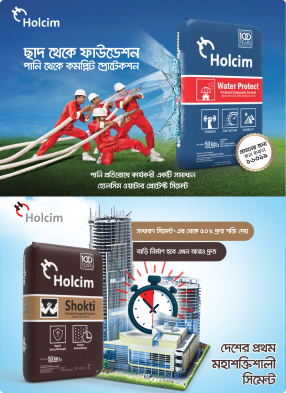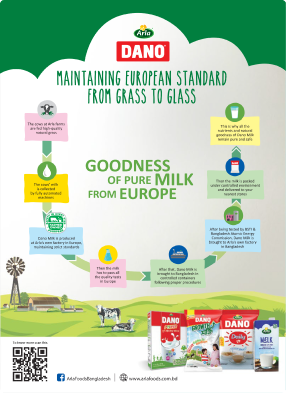- info@ficci.org.bd
- |
- +880248814801, +880248814802
- Contact Us
- |
- Become a Member
- |
- |
- |
- |
- |

As the primary gateway handling over 90% of Bangladesh's international trade, Chittagong Port remains a cornerstone of the nation's economic engine and global connectivity. Amid a significant rise in export-import volumes, the port is undergoing a transformative phase-driven by strategic infrastructure expansion and the integration of cutting-edge technologies. In this exclusive interview with the Foreign Investors' Chamber of Commerce & Industry (FICCI), featured in the March edition of its Monthly Bulletin themed "Strengthening Port Infrastructure: Driving Future Trade & Commerce," Rear Admiral S M Moniruzzaman, Chairman of the Chittagong Port Authority, outlines the port's forward-looking development agenda, digital evolution, stakeholder collaboration, and long-term vision to establish Bangladesh as a competitive logistics and trade hub in South Asia.

Q1. What are the current plans for expanding the infrastructure at Chittagong Port to accommodate the growing volume of trade?
Chittagong port is a traditional and natural river port that has grown over a thousand years. This port handles more than 92% of cargo and 98% of containers of total export and import in Bangladesh. There is a growing trend of cargo volume, particularly containerised cargos. Currently, Chittagong port handles more than 3.5 million Twenty Foot Equivalent Unit (TEU) of containers which is likely to grow further at an average rate of 7%. Chittagong port needs to handle more than 5 million TEUS of containers in 2030 which will reach around 7 million TEUS in 2035.In 2040, it will reach over 10 million TEUS. Because of the natural limitations, this port can only handle ships upto 200 m in length and 10 m in drought. Similarly, the ships movement in this port is tide dependent. We can operate ships during the high waters only; and more precisely during day time. In order to overcome these limitations, there is a need for capacity development as well as enhancement of efficiency.
In doing so, green infrastructure development is quintessential. Therefore, Chittagong port has taken initiatives to develop a deep sea port at Matarbari which will be operational in 2029 and a dedicated major sea port at Bay Terminal that will be operational in 2031. We are also going to build another container terminal and a heavy lift cargo jetty in Laldia by 2027.In addition, we are also planning to develop a free zone and a cold storage/reefer container yard in close vicinity of Chittagong port very soon.

Q2. How is the port leveraging modern technology and digital solutions to improve efficiency and reduce turnaround time?
In order to enhance the efficiency and reduce turnaround time, there is a need for introducing innovative measures like adopting new technology and digitalisation. We have planned for adopting 5G technology. Recent- ly, we introduced EU funded port community system, i.e., Maritime Port Single Window(MPSW), to have real-time visibility of ships and cargo. Now, we're going to integrate with the customs digital platform ASYCUDA with our Terminal Operating System (TOS). We also introduced online vehicle ticketing and real-time tracking system. Now, we're working with HSBC and EBL for real time gross settlement (RTGS) to facilitate online payments and banking. Once it is done, it will enhance efficiency, enable 24/7 real-time payments, boosting operations and capacity. Also, we are upgrading existing terminal operating system with the latest version as well as shifting our physical computer servers to clouds that is national data centre at Ghazipur. Moreover, we are also going to incorporate cyber security measures to maintain robust, uninterrupted and reliable data handling. Moreover, to remain relevant and contemporary with the global platform; we are also procuring new equipments with Green Technology for decarbonization. All together, once we adopt this integrated MPSW as port community system; it will enhance our operational efficiency in terms of speed, capacity and also cargo handling. In turn, that will greatly reduce our ships turn around time as well as reduce the cargo delivery time substantially. This will not only reduce the cost, but also enhance the port's image globally to attract more foreign investments as well as improve overall Export-Import efficiency.
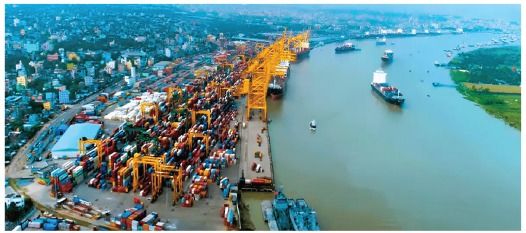
Q3. How does Chittagong Port position itself as a competitive hub for trade in South Asia? What steps are being taken to ensure the port remains resilient and adaptable to the rapidly changing global trade environment?
Chittagong port sits between the two major growing manufacturing hubs i.e., China and India. Major trade routes both to and from East and West flow through the Bay of Bengal. Cox's Bazar air port also seats on the major air routes both to and form East and West. Therefore, Bangladesh has a great potential for Regional connectivity and be vibrant hub of global supply and logistics chain in terms of sea borne cargo as well as air cargo. In addition, we have great potentials for developing manufacturing hub, energy hub for refueling, ship repair and maintenance facilities to compete the global market as well as conducting both direct shipping and coastal shipping regionally and globally. Therefore, Chittagong port will not only become the game changer, but also a blessing and growth booster for Bangladesh.
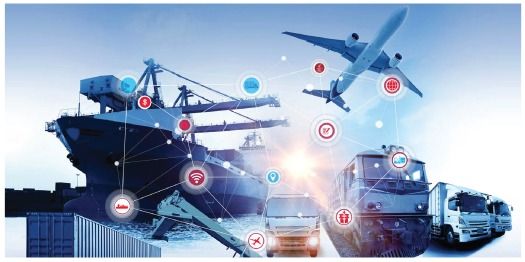
Q4. How does the port engage with various stakeholders, including shipping companies, exporters, and policymakers, to address challenges and improve services? What initiatives are in place to strengthen the connectivity between Chittagong Port and inland transport networks, such as rail and road systems?
Chittagong port regularly conducts meetings with multiple authorities, agencies, business community, ships owner, main line operators, terminal operators, ships operators, NBR, customs, local administration, different associations, agents, local communities and stakeholders to improve the efficiency of the port and its services. Currently, Chittagong port handles 96% of cargo by road, 3% by rail and 2% by river routes. In order to improve the efficient transportation of goods to and from its destination, there is a great necessity for improving and developing multimodal connectivity in terms of rail, road, river and air cargo transportation. For this, we have taken plan to reduce the transportation by road upto 70% and increase by rail upto 20% as well as by river upto 10%.If we can do that, we shall be able to greatly vitalize the multimodal transportation and logistics. This will give great advantage in terms of speed of delivery, safety and competitive transportation of goods both in the hinterland as well as in the coastal shipping networks.
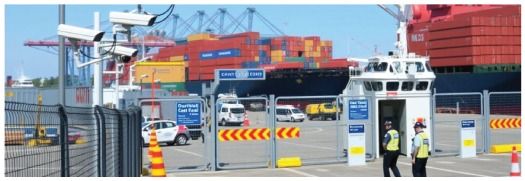
Q5. How is the port enhancing its security protocols to ensure smooth and safe trade operations?
Chittagong port is a ISPS code complaint port. We maintain international security protocols, standing operating procedure, international best practices, regulations and principles. Chittagong port conducts regular training and exercises as well as safety, security, survey, inspections and checks. We adhere very strictly the safety and security protocols. We have a great team of safety and security team of professionals with a robust organisational structure that maintain 24/7 readiness, surveillance, vigilance, monitoring, control and interventions. Recently, US coast guard conducted a security audit as part of ISPS code compliance. This time, there was no observation from the team, which is unprecedented. Chittagong port maintenance all the international norms, protocols as well as national guidelines for maintaining safety and security of port, its operations and safe movement of cargo to and from its destination. However, we are introducing modern access control, scanning, surveillance, and security equipment for enhancing security and safety operations.
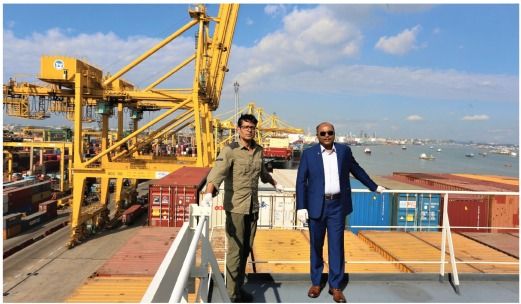
Q6. What are the main strategies being adopted to enhance the port's revenue while maintaining affordability for users?
First of all, we have broken the syndicates and taken measures to a vast monopoly. We cancelled many licenses who used to do business violating the due procedures. We have devised new policy for allowing people to participate in day to day business with new licenses. In all the tendering process, we have introduced open tendering method, and tendering processes are done through online electronic platform. As such, there is less chance of monopoly and syndication. We also introduced four times store rents for late delivery as well as 72 hours time for leaving the port limits after loading from mother vessels. These initiatives enable free flow of goods to the market and thereby reduce the cost of commodity prices. In a nutshell, we have taken initiatives for ease of doing business as well as introducing efficiency which will reduce the turn around time and enhance capacity for speedy delivery/handling of cargo. They have largely reduced the cost of cargo as well as increased handling capacity. They enabled the unprecedented revenue growth for both Chittagong port and Customs.
Q7. What is your long-term vision for Chittagong Port, and how do you see it shaping the future of trade and commerce in Bangladesh?
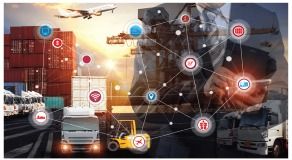 First of all, we want to be competitive, efficient and capable export and import hub in Bangladesh. We want to introduce green technology and incorporate MSW as port community system that will give real-time total visibility for all export and import cargo, ship and transportation system. We want to enhance our capacity proportionately with the trend of growth. So that, we do not fall in the trap of supply and demand. We want to remain relevant with adaptation of green technology as part of our commitment to global initiatives for environmental compliance in terms of decarbonization and digitalization. We shall remain compatible with global maritime platform and industries. Our initiatives for digital and green maritime corridor will consistently remain in transition. We also expect that Chittagong port facilities will be a resilient and adaptive export import hub in the region and leader in global shipping industry to support both future foreign investment as well as domestic business development of Bangladesh. In order to be consistent and contemporary, we shall introduce Maritime Port Strategy for future growth, efficient port operations and competitive export/import. We envision that Chittagong will be the growth engine and manufacturing hub of Bangladesh, where Chittagong port will be the key player to support those initiatives.
First of all, we want to be competitive, efficient and capable export and import hub in Bangladesh. We want to introduce green technology and incorporate MSW as port community system that will give real-time total visibility for all export and import cargo, ship and transportation system. We want to enhance our capacity proportionately with the trend of growth. So that, we do not fall in the trap of supply and demand. We want to remain relevant with adaptation of green technology as part of our commitment to global initiatives for environmental compliance in terms of decarbonization and digitalization. We shall remain compatible with global maritime platform and industries. Our initiatives for digital and green maritime corridor will consistently remain in transition. We also expect that Chittagong port facilities will be a resilient and adaptive export import hub in the region and leader in global shipping industry to support both future foreign investment as well as domestic business development of Bangladesh. In order to be consistent and contemporary, we shall introduce Maritime Port Strategy for future growth, efficient port operations and competitive export/import. We envision that Chittagong will be the growth engine and manufacturing hub of Bangladesh, where Chittagong port will be the key player to support those initiatives.



